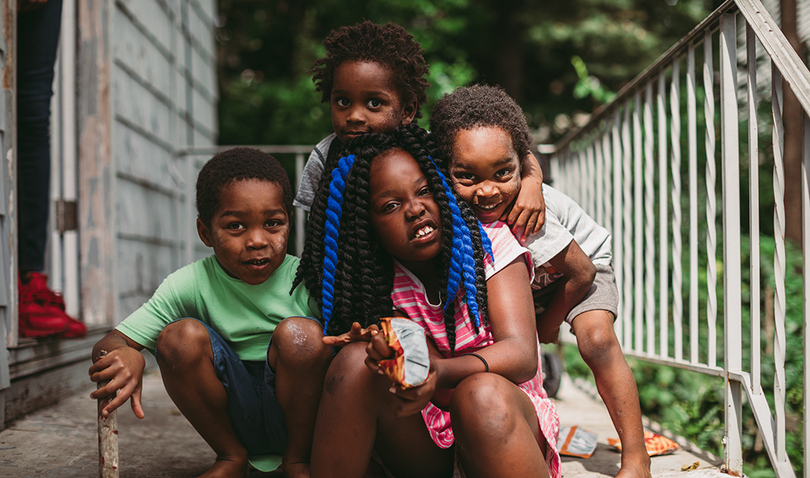ROOM FOR HOPE: An inside look into one family’s struggle with lead poisoning

D
arlene Medley, 39, is a single mother of nine. Last year, she took her 3-year-old twin boys to a clinic in Syracuse for a yearly check-up.
She found out that they both had high levels of lead in their blood.
Rashad Jr. Williams, the older of the two twins, had blood-lead levels of 20 to 22 micrograms per deciliter. His brother, Devon Williams, had levels at 12 to 16 micrograms per deciliter.
New regulations in New York state lowered the standard for elevated lead levels in children’s blood from 10 to 5 micrograms per deciliter. Counties are required to inspect the house of any child whose blood-lead levels are above 5 micrograms per deciliter.
The effects of lead poisoning can include developmental delays, behavior problems, loss of energy and weight loss. Medley recognizes these symptoms in her sons.
Lead has been found all over their home: in the paint on the walls, in dust on toys and even the soil outside her home where her children play daily.
“I’m watching my kids suffer,” she said.
Nearly 500 Syracuse children tested in 2018 were found to have elevated lead-blood levels, according to the Onondaga County Health Department. More children may be considered to have elevated levels under the new state regulations.
During the summer, her twin boys were sick with the Coxsackievirus, also known as hand, foot and mouth disease. The virus was misdiagnosed six times by different doctors. When the doctor eventually diagnosed them, the wounds inside their mouths were already healing. These are the rashes depicted in the photos.
The last time Rashad Jr. was tested, he had a blood-lead level of 9 micrograms per deciliter. Devon had a level of 8. Medley hopes the levels will drop further the next time they are tested.

Twin boys Rashad Jr. and Devon Williams pose for a photograph after playing in the yard outside their home where a code inspector found lead in the soil earlier this year.

Rashad Jr., the oldest of the twins, had lead levels of 20 to 22 micrograms per deciliter last year. Any amount of lead in the blood is considered dangers. The last time he was tested he had a level of 9. They both will be tested soon in hopes that their blood-lead levels have decreased.

Darlene Medley tried to prepare supper every day for her children in her home on Syracuse’s Northside. Today, she is rushing to get food on the table because she was called into work on her day off.

During the summer her twin boys were sick with the Coxsackievirus, also known as hand, foot and mouth disease, which was misdiagnosed six times by different doctors. Eventually, when the doctor diagnosed them, the wounds inside their mouths were already healing. These are the rashes you see depicted in the photos.

Though the lead poising has affected the boys in many ways it doesn’t stop them from having a smile on their face.
Photos and story by Jessica Ruiz. You can contact Jessica at jeruiz@syr.edu.




